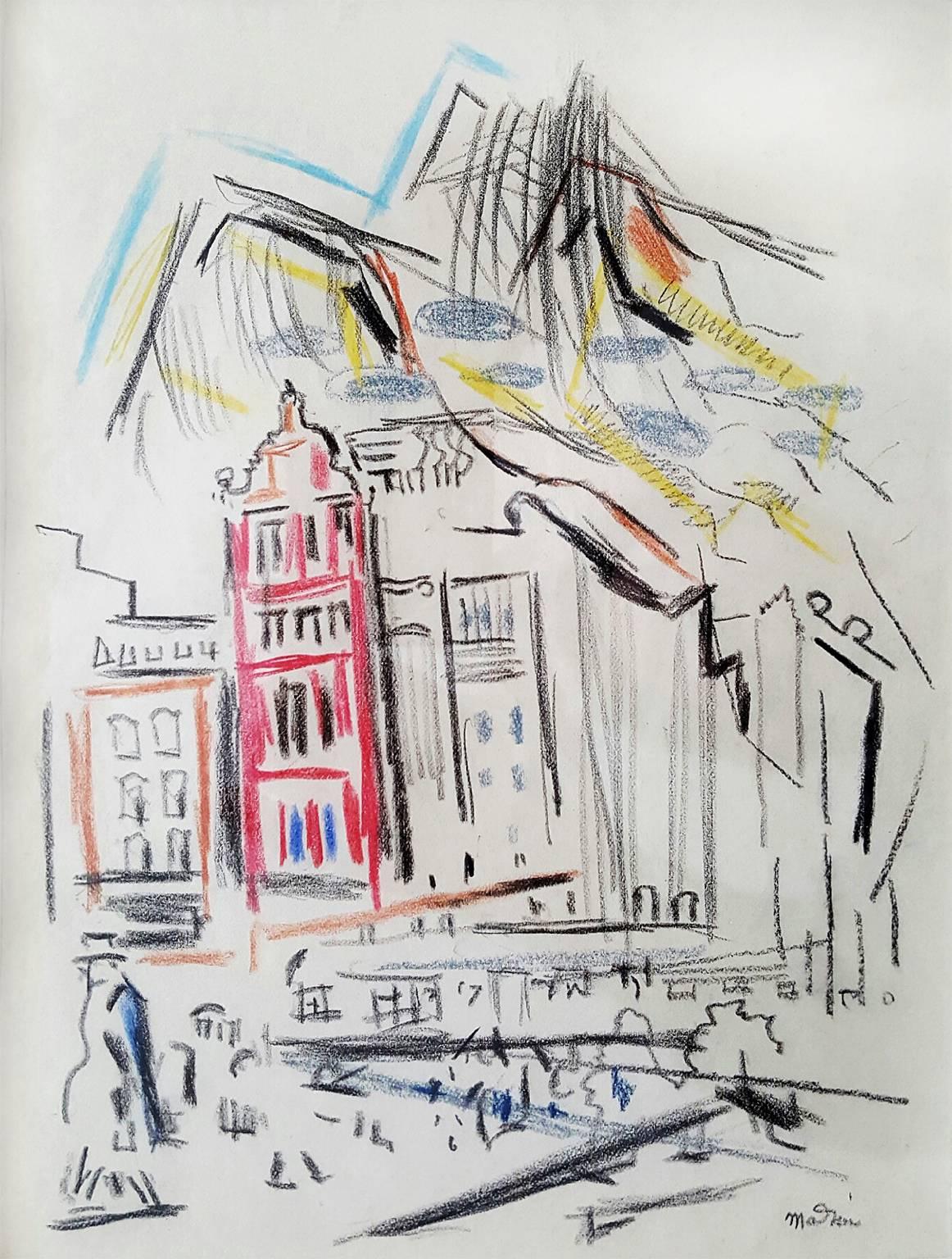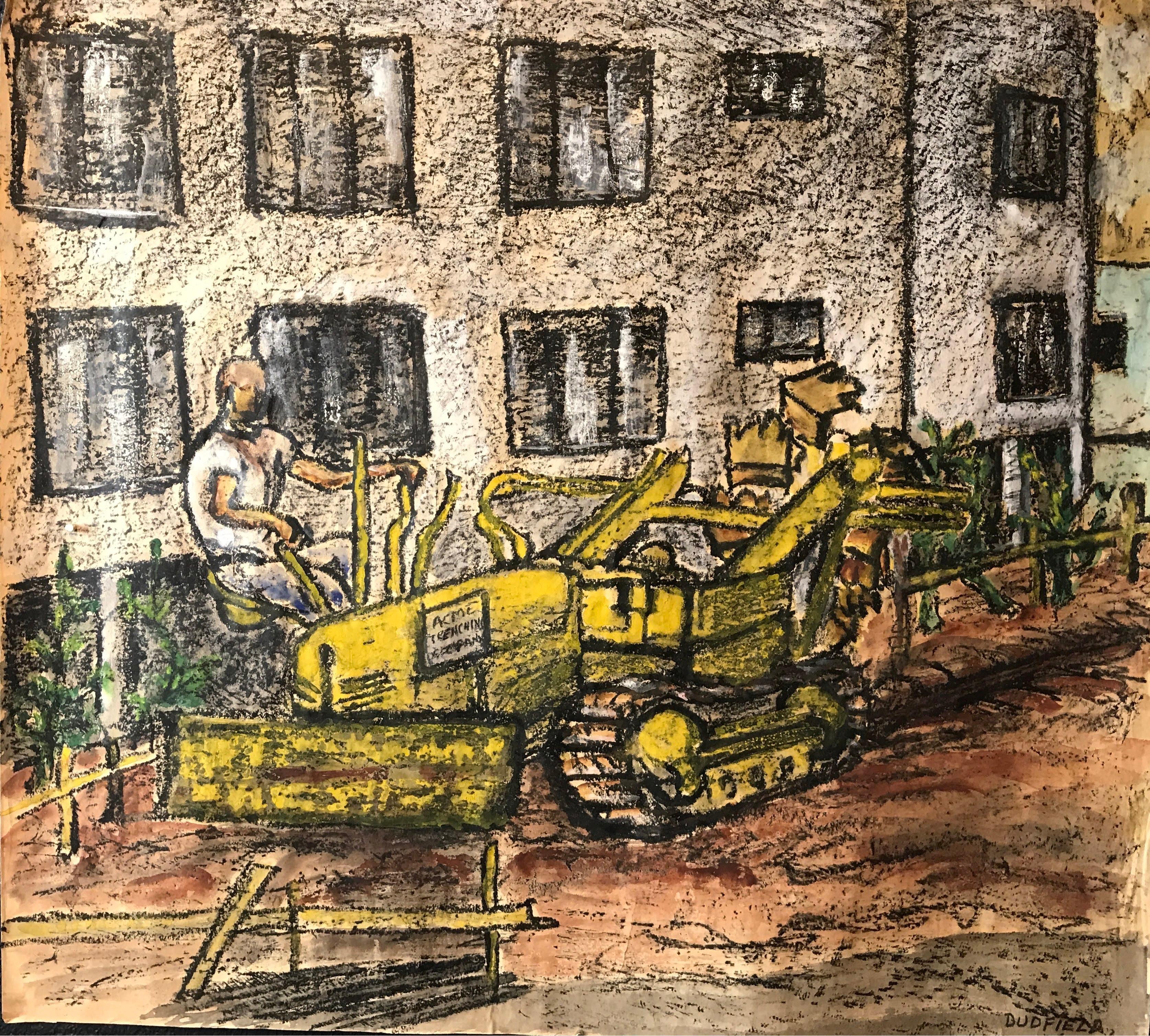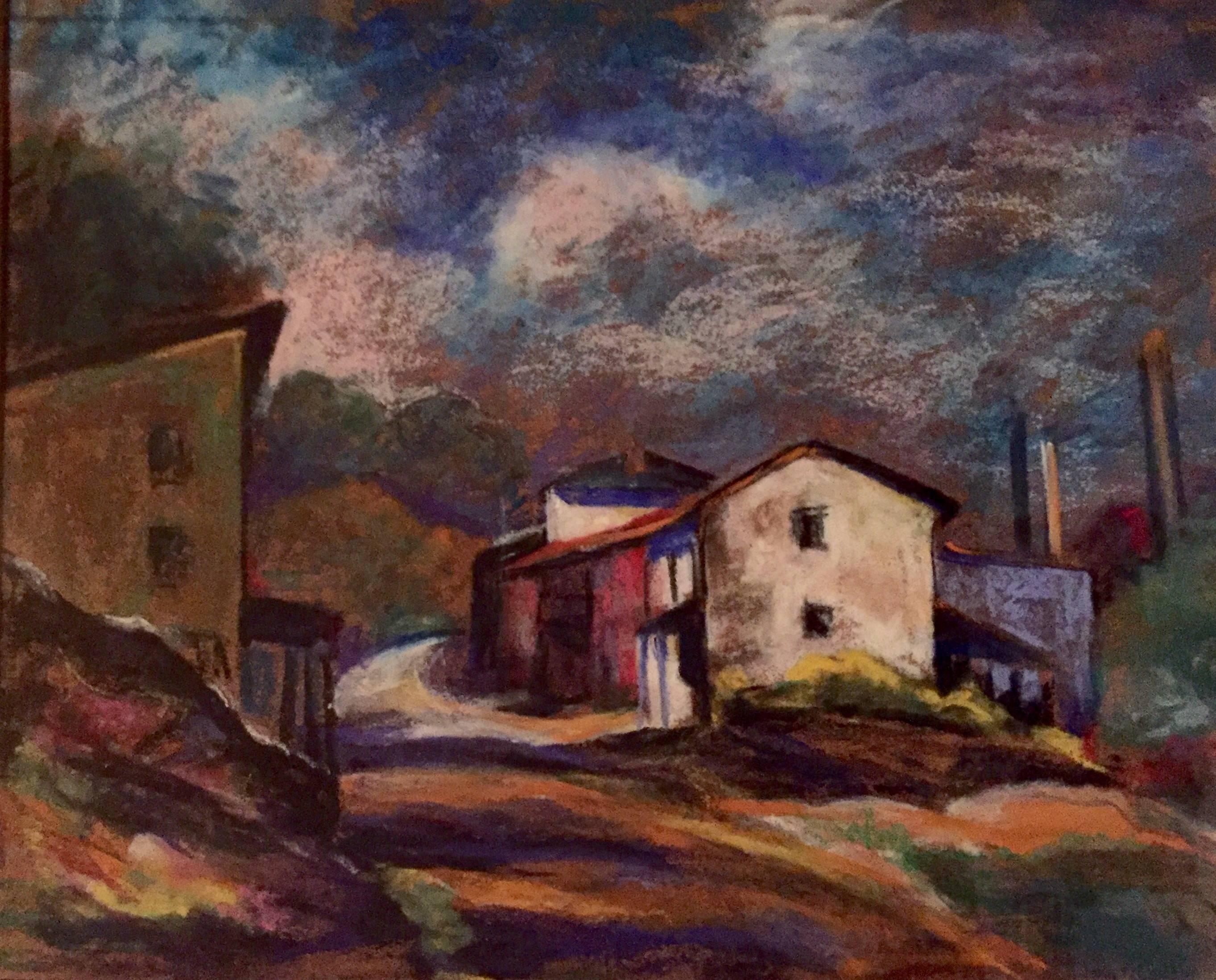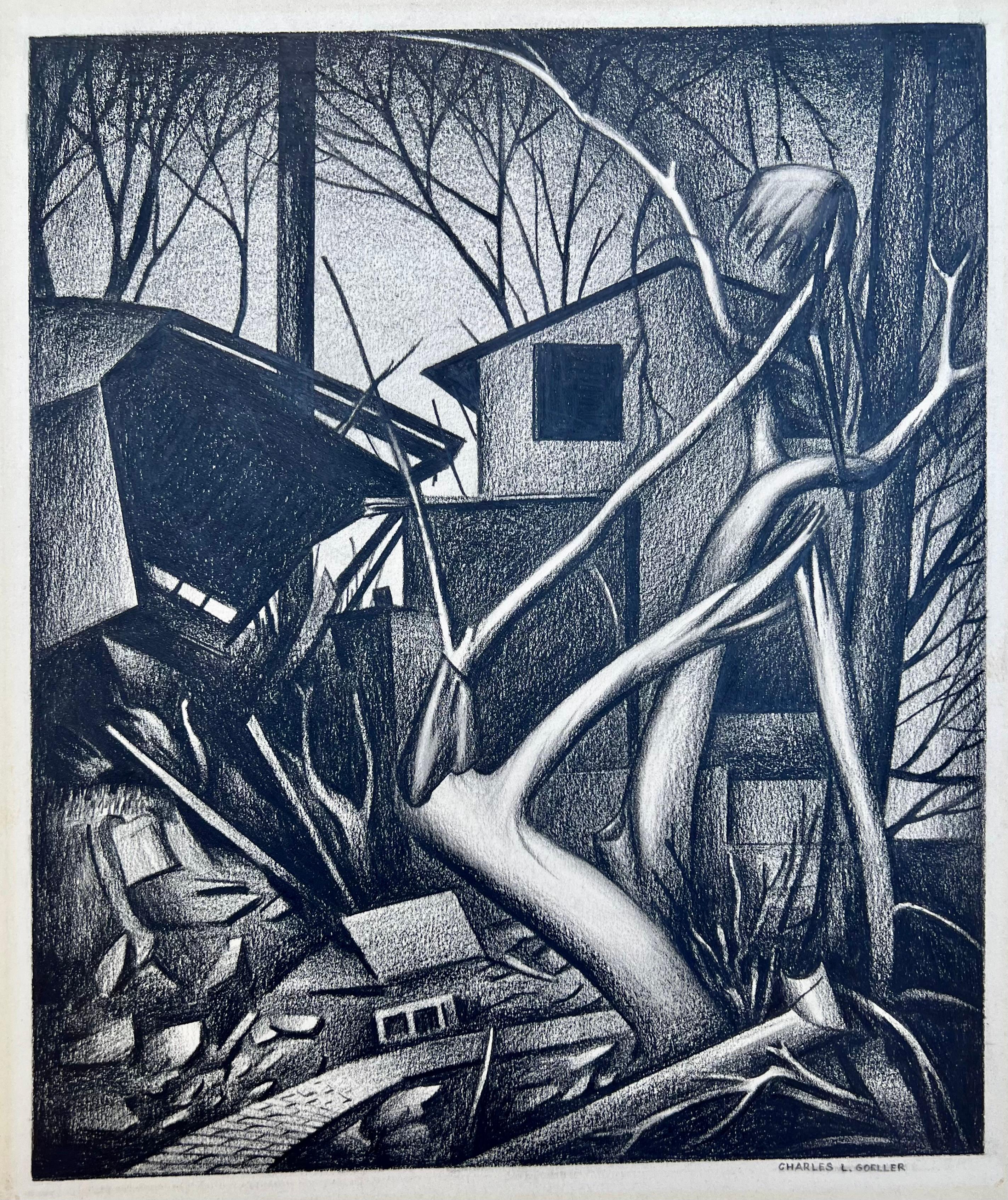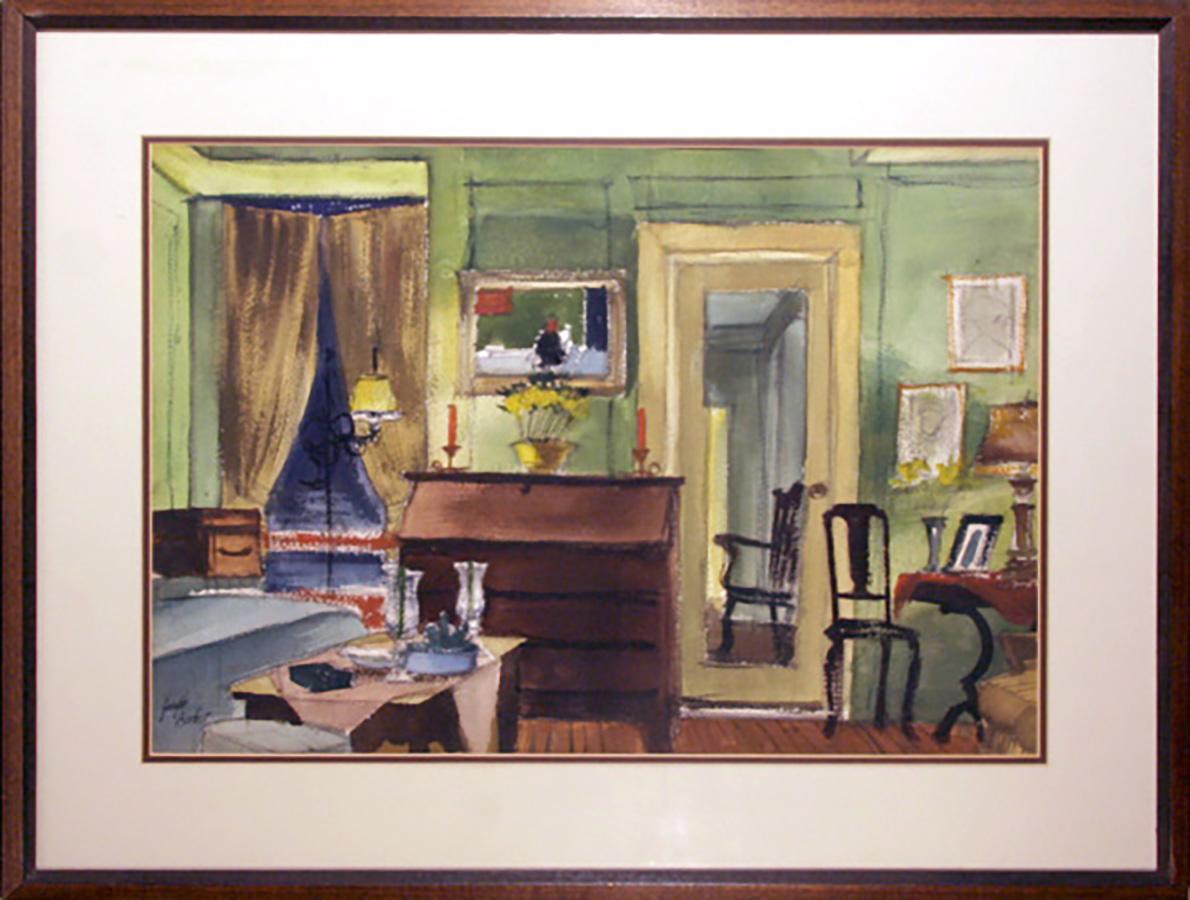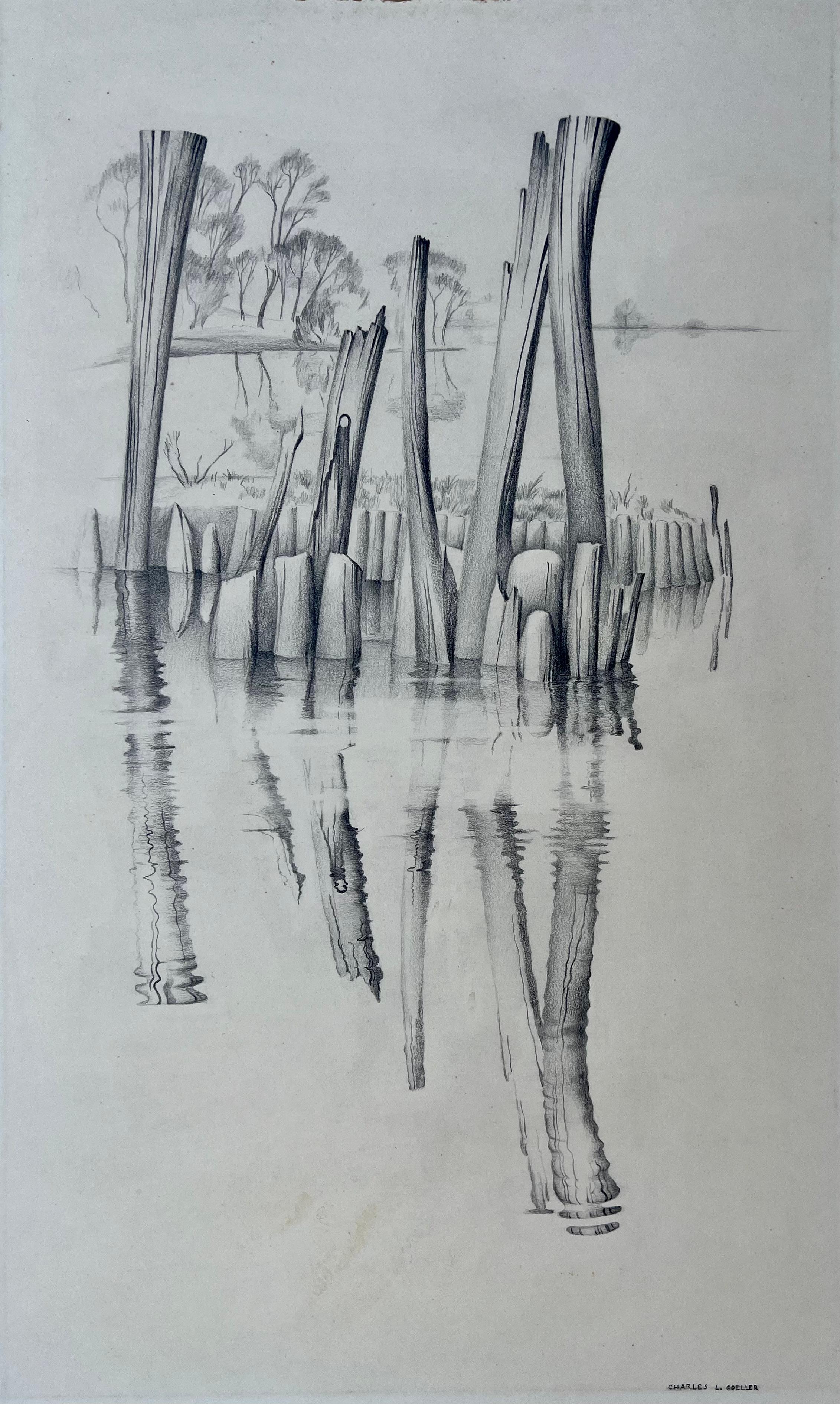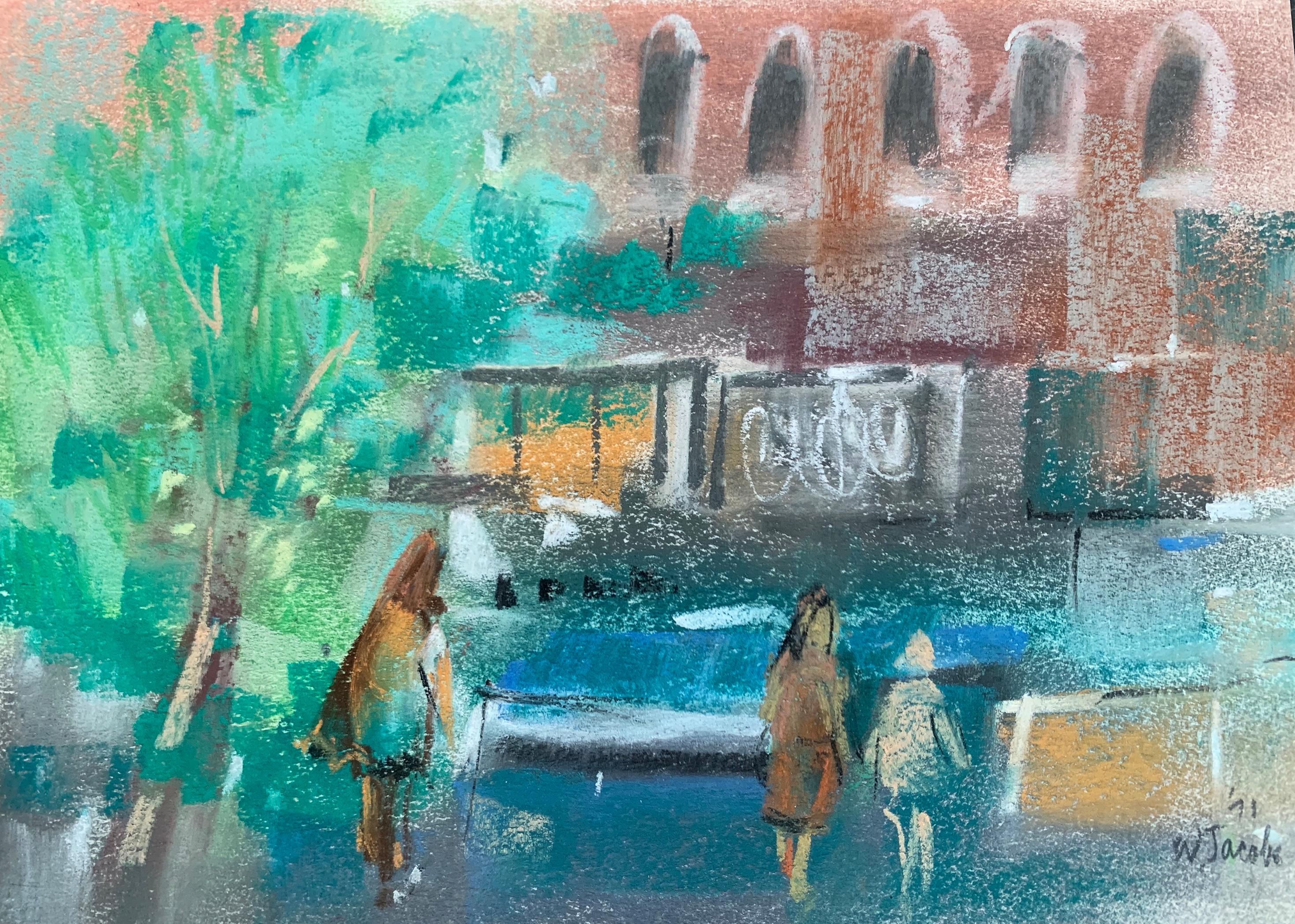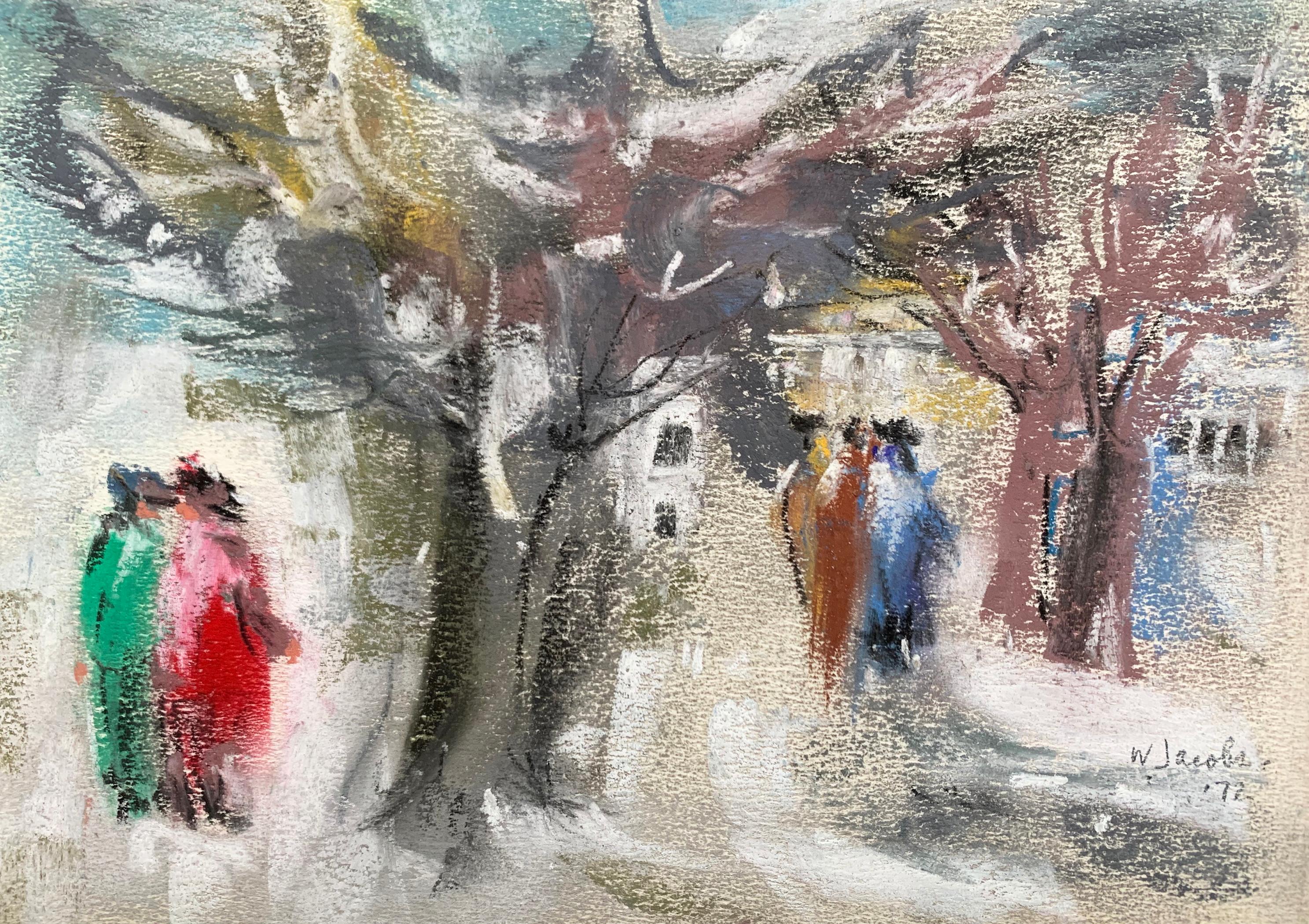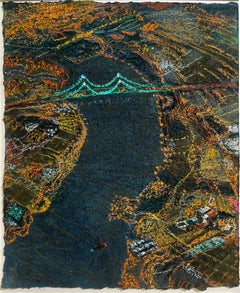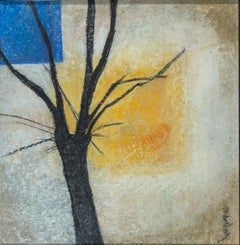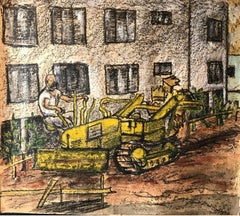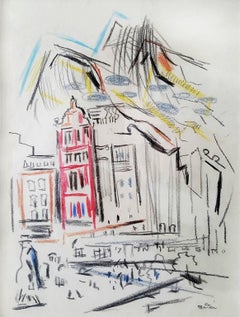
New York Street Movement and Figure
View Similar Items
Want more images or videos?
Request additional images or videos from the seller
1 of 8
John MarinNew York Street Movement and Figure1925
1925
About the Item
- Creator:John Marin (1870-1953, American)
- Creation Year:1925
- Dimensions:Height: 8 in (20.32 cm)Width: 10 in (25.4 cm)
- Medium:
- Movement & Style:
- Period:
- Condition:Frame has some wear and tear to it but the work is in excellent condition.
- Gallery Location:Miami, FL
- Reference Number:1stDibs: LU38534994511
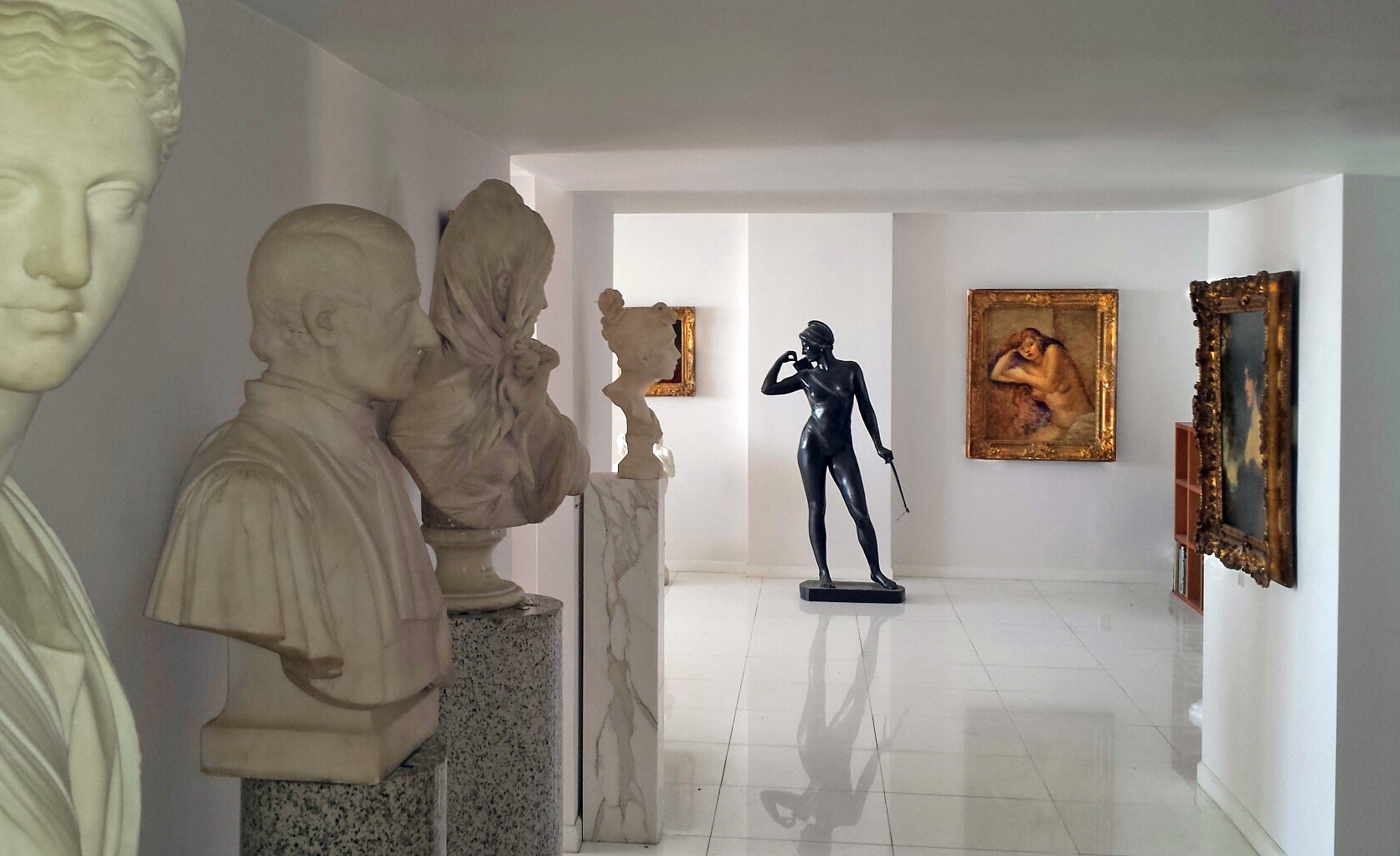
About the Seller
4.9
Platinum Seller
These expertly vetted sellers are 1stDibs' most experienced sellers and are rated highest by our customers.
Established in 2005
1stDibs seller since 2016
Typical response time: 1 hour
More From This SellerView All
- New York Street Movement and Figure - ArchitectureBy John MarinLocated in Miami, FLThis work by John Marin depicts an image of lower Manhattan which was Marin's more iconic subject matter. The work has a stellar provenance as well. Provenance: Kennedy Galleries Richard York Gallery ACA Galleries...Category
1920s American Modern Mixed Media
MaterialsCrayon
- Metropolitan Fantasy - City at Night with Pulsing LightsBy Yvonne JacquetteLocated in Miami, FLYvonne Jacquette uses pastel on a heavy rag paper to depict an ariel city scene at night with pulsing lights. There is a heavy texture to the paper and the surface is rich and vibra...Category
1990s American Modern Landscape Paintings
MaterialsPastel, Rag Paper
- Handsome Couple in Sailboat - Collier's Magazine IllustrationBy Earl Oliver HurstLocated in Miami, FLCollier's Magazine Illustration From the Estate of Charles Martignette. Work is framed in a period wood frame Watercolor on boardCategory
1940s American Modern Figurative Drawings and Watercolors
MaterialsBoard, Watercolor
- New York Harbor with Ferry boats and Victorian Houses - Holiday Magazine CoverBy Saul SteinbergLocated in Miami, FLSteinberg's Holiday Magazine Cover, " The North of Jersey " is similar to his famous New Yorker Cover "View of the World from 9th Avenue”. ...Category
1950s American Modern Landscape Drawings and Watercolors
MaterialsIndia Ink
- Pirate Ship - Skull-and-Crossbones Seven Seas Illustration in White and BlueBy Jamie WyethLocated in Miami, FLThe Skull-and-Crossbones flag flies atop this illustration of a Pirate Ship. Two palm trees flank it, and it floats in a cropped stylized sea. A single hatted figure is seen looking ...Category
1970s American Realist Landscape Drawings and Watercolors
MaterialsPastel, Ink, Board
- Children Snow Sledding in Central Park - New Yorker Cover StudyLocated in Miami, FLHungarian/American artist/illustrator depicts a charming scene of sledding in the snow in Central Park. The work is abstract in its design as it's functional in its narrative - Unpublished New Yorker...Category
1940s Modern Figurative Drawings and Watercolors
MaterialsCharcoal, Ink, Watercolor, Gouache, Pencil
You May Also Like
- UntitledLocated in Bournemouth, DorsetSally Barclay (1911-2000) was a New Jersey Artist known for her painting and activities as an art teacher. Signed front and back.Category
1950s American Modern Landscape Drawings and Watercolors
MaterialsCrayon
$457 Sale Price20% Off - 1964 San Francisco Construction Site Large Gouache and Pastel LandscapeBy Gloria DudfieldLocated in Arp, TXGloria Dudfield Tractor at Work 6-10-64 Gouache and Oil Pastel on Paper 36"x32 1/2" Unframed Signed and dated lower right in crayon Very Good Condition - Minor wear consistent with ...Category
1960s American Modern Mixed Media
MaterialsPaper, Oil Pastel, Gouache
- "The Winding Road"By John F. CarlsonLocated in Southampton, NYHere for your consideration is a very well executed pastel on paper by John Fabian Carlson. Signed lower right and mostly likely done in the 1930's...Category
1920s American Modern Landscape Drawings and Watercolors
MaterialsPaper, Oil Pastel
- Beautiful large impressionist pastel by Francesco SpicuzzaBy Francesco SpicuzzaLocated in Larchmont, NYFrancesco Spicuzza (American, 1883-1962) Untitled Landscape, 20th century Pastel on paper Sight size: 24 x 30 in. Framed: 26 1/4 x 32 3/8 in. Signed lower right: Spicuzza Italian-born Francesco Spicuzza was primarily a Wisconsin painter who did portraits, still-lives and local landscapes. He spent the first part of his life in near-poverty to become a painter. An eternal optimist, in 1917, the artist reported: "I am happy and my only ambition now is to paint better and better until I shall have reached the measure of the best of which I am capable." (Spicuzza, 1917, p. 22). His predilection for beach scenes germinated early: reportedly, the five-year-old boy first drew the outlines of his father's fishing boat in the sand on the seashore near their home in Sicily. After setting himself up as a fruit peddler in Milwaukee, Spicuzza's father sent for his family when Francesco was eight years old. For the following six years the boy was unable to attend school because of his job in his father's fruit and vegetable business. The poor lad suffered a caved-in shoulder from carrying a heavy wooden crate. The young Spicuzza was aided by moral and financial support from a sympathetic Milwaukee businessman named John Cramer, publisher and editor of the Evening Wisconsin, who raised Spicuzza's salary as a newspaper assembler so that he could attend school. In 1899 or 1900, Spicuzza began studying drawing and anatomy under Robert Schade (1861-1912), a painter of panoramas who had been trained in Munich under Carl Theodor von Piloty. Spicuzza was also taught by Alexander Mueller (1872-1935), a product of the Weimar and Munich academies. Mueller realized Spicuzza was a colorist and encouraged that orientation (Madle, 1961). Spicuzza found it beneficial to accept an apprenticeship in a lithographic studio for $8 a week, which demanded most of his time. During the St. Louis Universal Exposition in 1904, still a struggling student, Spicuzza attended the fair, thanks to Cramer. It was not long before Spicuzza received a twenty-five dollar portrait commission, and this inaugural success led to new commissions and allowed him to continue as a painter. The earliest influences in his work appear to be from Edward H. Potthast and Maurice Prendergast, though Spicuzza never mentioned either artist. Already in August 1910, Spicuzza was described in a newspaper as "one of the most talented of Milwaukee's rising workers." He undoubtedly received lasting inspiration from his one summer study period in 1911 with John F. Carlson at the Art Students League's Summer School in Woodstock, New York. Certainly Spicuzza would have picked up spontaneity in handling the brush from Carlson. Although he executed numerous still-lives and an occasional religious work, Spicuzza is best known for his Milwaukee beach scenes populated with frolicking bathers in multi-colored attire, not unlike the images of Potthast, who used a similar technique. Many of these are small, preparatory works on canvas board executed between 1910 and 1915. Frequently with even greater animation than Potthast, Spicuzza produced moving images of youthful energy and uninhibited child's play. These beach genre scenes reflect the attitude of American impressionists who depicted the more pleasant side of life. Spicuzza manipulated a successful balance of rich pigment applied in varying degrees of impasto texture with subtle nuances of hue. Working all'aperto, he sought "the soft enticing shades of yellow, blue, green, pink and lavender . . . to get the effects of bright glistening summer air." (L.E.S., n.d.). As a painter whose color not only derived from direct observation but also from a personal theory of color symbolism, Spicuzza traded the linear approach of lithography for dynamic patches of brilliant color. Like Prendergast, he would often tilt the angle of the picture plane to bring the viewer's position above the scene. Spicuzza was unable to enter the 1913 Armory Show or the Panama-Pacific International Exposition two years later but he did submit work to the annual exhibitions of the Pennsylvania Academy of the Fine Arts and those of the Art Institute of Chicago. His first important award was the bronze medal presented by the St. Paul Institute in 1913, which was followed by the silver medal two years later. Before long, Spicuzza had acquired a greater sense of security in his profession and was described by a writer in International Studio (April 1917) as "an independent artist with an assured future. His pastels and water-colours are poetic and joyous bits of nature with a genuine out-of-door feeling." In 1918, his Spirit of Youth, exhibited at the National Academy of Design, sold for $112.50. Four years later, the artist achieved his greatest local recognition by winning the gold medal from the Milwaukee Art Institute. Spicuzza spent a great deal of time painting en plein air and by 1925 he began summering at Big Cedar Lake, near West Bend, Wisconsin to gather his subject matter. Easter Morning (1926) owes something to the Symbolist movement, with its figure of Christ appearing over a seascape. During the difficult era of the Depression, patrons came to Spicuzza's aid and during the 40s, he taught housewives, businessmen and students at the Milwaukee Art Institute, the Milwaukee Art Center, and in his private studio. In the following decade, although his kind of art was no longer popular in the "make-it-or-break-it" New York gallery world, Spicuzza enjoyed regular patronage and sales. His beach scenes became more static and he would experiment with modernist techniques. Spicuzza died at the age of seventy-eight. Sources: L.E.S., "Do Colors Change a Person's disposition? Experiments of a Milwaukee Artist...Category
20th Century American Modern Landscape Drawings and Watercolors
MaterialsPaper, Pastel
- FloodLocated in Los Angeles, CAThis drawing is part of our exhibition Charles Goeller: A Wistful Loneliness. Crayon on paper, 10 ½ x 9 inches (image), 14 x 11 inches (sheet), Signed...Category
1930s American Modern Landscape Drawings and Watercolors
MaterialsPaper, Crayon
- Dining Room Interior, Pastel Drawing by Joseph BarberBy Joseph BarberLocated in Long Island City, NYArtist: Joseph Barber, American (1915 - 1998) Title: Dining Room Interior Year: circa 1945 Medium: Watercolor and Pastel on Paper, signed l.l. Size: 15 x 21 inches (38 x 53.5 cm) Fra...Category
1950s American Modern Landscape Drawings and Watercolors
MaterialsOil Pastel, Archival Paper

